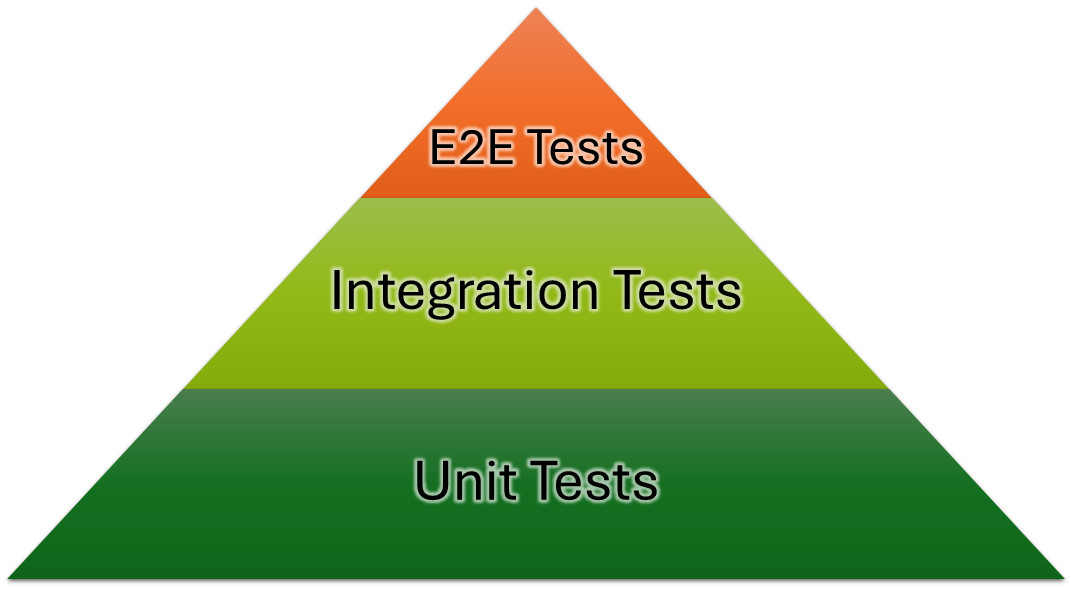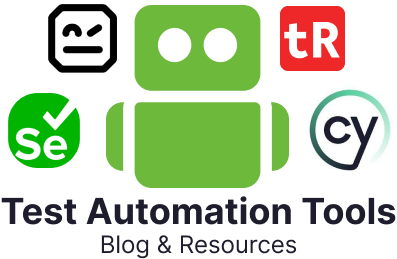With the rising popularity of Agile and DevOps methodologies, software testing has become a vital element of modern software development. The Testing Pyramid is one of the best approach to keep a testing procedure scalable and productive. The question that arises, however, is, what is the testing pyramid and why is it vital?
Let us discuss the idea, describe the various layers, look at best practices, and highlight how it is applicable in the rapid development cycles of today in this blog.
Understanding the Testing Pyramid
Software teams can utilize the testing pyramid as a visual model to help them organize automated tests. The method was built by Mike Cohn to encourage a more manageable and economical testing approach. The proportion and kind of tests that ought to be written at every phase of the software stack are represented by the pyramid metaphor.
The three layers of the testing pyramid are:
- Base unit tests
- Middle-Range Integration Tests
- UI or end-to-end (E2E) tests
Each layer has its benefits and drawbacks and fulfills a unique function.
The Test Automation Pyramid

The Base Layer: Unit Tests
The base of the testing pyramid is unit testing. These tests validate the smallest components of an app, usually particular methods or functions. Unit tests are quick to write, easier to execute, and very iterative because they don’t rely on external systems.
Why Unit Tests Matter
- Faster Execution: Unit tests are ideal for integrating into development workflows because they execute fast, often in milliseconds.
- High Coverage: They can cover the majority of the application code by validating discrete, small segments of logic.
- Early Feedback: Since these tests are lightweight and quick to run, developers can rely on them to get prompt feedback on their code.
- Reduced Defect Cost: Compared to issues discovered later in the cycle, those detected early are less expensive and easier to solve.
Examples of Unit Tests:
- Analyzing a class in the code that sets discounts as per the order quantity.
- Ensuring that a string manipulation logic results in the desired outcome based on the expected outcomes.
Best Practices for Unit Testing
- Ensure that the tests are deterministic, so that results don’t change from run to run.
- Each test should only examine a single concept.
- To segregate dependencies, use mocks and stubs.
- Use established nomenclature, such as “shouldReturnTrueWhenInputIsValid”, to clearly structure test code.
- Execute tests regularly, preferably on every commit.
The Middle Layer: Integration Tests
Integration tests validate that different services or modules within a system work as expected. Usually, these tests consist of elements such as databases, file systems, third-party services, and APIs.
Benefits of Integration Testing
- Detecting Interface Issues: Useful in detecting issues where units interact and are often the source of bugs in distributed systems.
- End-to-end in Parts: They confirm collaboration between different components of the stack but do not test the entire stack.
- Ensures Data Flow Accuracy: Validates that information is transferred and managed appropriately between interfaces.
Examples of Integration Tests
- Validating a database-connected user registration service that generates an email confirmation.
- Making sure that data from a backend API is effectively consumed by the frontend.
Best Practices for Integration Tests
- When possible, prefer real services over mocks; however, in staging environments, it is advisable to isolate external dependencies.
- Ensure that the tests are idempotent, i.e. that running them more than once should still result in the same results.
- Execute them after unit tests in your CI/CD pipeline.
- Log meaningful output to ensure faster debugging.
The Top Layer: End-to-End (E2E) Tests
End-to-end (E2E) testing is at the top of the testing pyramid. These tests mimic the real-world scenarios to validate that the system functions as expected from the viewpoint of the user.
Why are E2E Tests Important?
- Validate Comprehensive Workflows: They ensure that the app’s different components work as a cohesive unit in practical scenarios.
- Test User Interfaces: They verify that user interfaces are usable and interactive.
- Identify Critical Bugs: They are able to detect issues that lower-level tests might ignore because they replicate actual user interactions.
Examples of E2E tests
- Replicating a user logging in, adding products to a cart, and checking out.
- Verifying that a user receives an email after form submission.
Challenges with E2E Testing
- Slow Execution: They often take several minutes to complete.
- Flakiness: At risk of malfunctioning because of unpredictable environments or issues with UI rendering.
- Difficult Maintenance: Regular test updates are vital for UI modifications.
Best Practices for E2E Testing
- Restrict the number of E2E tests to high-value, high-risk scenarios.
- Leverage tools such as Selenium, Playwright, testRigor, or Cypress.
- To reduce build time, execute these tests in parallel whenever possible.
Ensure that the configuration of your test data is reliable and simple to reset.
The Importance of Testing Pyramid
Time is saved, bugs are reduced, and deployment confidence is boosted with a well-balanced and well-planned test automation strategy. The pyramidal structure promotes:
- Efficient Use of Resources: A Higher number of integration and unit tests entails faster, less expensive feedback.
- Scalability: It’s simpler to extend test coverage without bloating the test suites.
- Reduced Risk: The possibility of expensive production bugs is reduced by proactive issue detection.
Ignoring the pyramid can lead to the “ice-cream cone anti-pattern,” which is a rigid and ineffective testing method where excessive emphasis is placed on user interface tests.
Testing Pyramid v/s Testing Trophy
Substitute solutions such as the testing trophy, that focus more on integration tests, have recently been embraced more by some teams. The ideal structure often depends on the unique architecture, context, and goals of your team, even though the traditional pyramid is a good place to start.
Testing Pyramid
- Intense focus on unit testing
- Easier to implement
- Encourages faster feedback
Testing Trophy
- Increased focus on integration
- Supports modern component-based architectures such as React.
Choose the model that best fits your needs, but always work toward equilibrium.
Implementing the Testing Pyramid in your Workflow
Intentional team practices, tooling, and CI/CD integration are mandatory for the testing pyramid to be implemented successfully.
1. Build a mindset of shift-left testing
Include testing from the very initial phases of the development process. Before writing code, establish a process using either Test-Driven Development (TDD) or Behavior-Driven Development (BDD).
2. Prioritize unit tests
Writing unit tests in addition to application code will facilitate laying a solid foundation. Ensure to include them in your definition of done.
3. Leverage CI/CD integration
- Configure your pipelines to execute unit tests after each commit.
- Schedule integration tests for the staging phase or post-merge.
- E2E tests should be reserved for nightly or pre-release test suites.
4. Use the right tools for each layer
Here are some examples of tools that can be used:
- Unit: Jest, Mocha, NUnit, JUnit
- Integration: Postman, REST Assured, TestContainers.
- E2E: Cypress, testRigor, Selenium, Playwright.
5. Enforce Test Coverage goals
Establish minimum test coverage thresholds and monitor outcomes in dashboards.
6. Be alert and maintain test quality
Assess test logs often, rectify flaky tests, and refactor outdated ones. The top priority should always be a failing test.
7. Train the team
Ensure that everyone on the team is aware of the function of each test type and how it impacts the final quality of the product.
Teams can achieve long-term advantages and fully integrate the test pyramid philosophy into their workflow by adhering to the above steps.
Best Practices for Implementing Testing Pyramid
Test maintainability, distribution, and return on investment are all vital considerations when implementing the testing pyramid. Below are some established best practices:
1. Follow the 70/20/10 Rule
Aim for roughly:
- 70% unit tests.
- 20% integration tests.
- 10% E2E tests.
Speed, reliability, and coverage are all maintained by this ratio. Customize to the specifics of your project.
2. Validate the Right Things at the Right Layer
If UI logic is already validated by unit tests, don’t test it in E2E tests. Use:
- Unit tests for algorithm and logic.
- E2E tests to verify user workflows.
- Integration test to verify communication.
3. Steer Clear of Layer Redundancy
Avoid repeating test cases across layers. Redundant testing increases maintenance costs without providing any value. Every layer should have a unique function.
4. Improve Test Data Management
Build test environments and reusable test data fixtures. Ensure you have the following for integration and E2E tests:
- Database seeders or snapshots.
- Reset procedures to restore baseline conditions.
- Synthetic test users for predictable outcomes.
5. Review and Refactor the Test Suite Continuously
A few tests may be too fragile or outdated as your application evolves. Frequently check:
- Effectiveness of audit tests.
- Elimination of out-of-date tests.
- Consolidate overlapping tests.
Refactor to implement newer testing methods.
6. Monitors Test Performance
- Track test failure rates and run times.
- Reduce CI pipeline failures and improve build speeds.
- Detect flaky or slow tests.
7. Automate Feedback Loops
Ensure that test failures trigger prompt notifications and alerts. For rapid visibility and resolution, integrate with messaging apps like Slack or email.
8. Encourage Test Ownership Culture across the Team
Promote a culture in which QA engineers and developers collaborate to build and manage automated tests. Better understanding and wider coverage are guaranteed by shared responsibility.
Teams can make the most out of the automated testing pyramid and ensure dependable, high-caliber software delivery by following these best practices.
Conclusion
One of the key concepts of modern software testing is still the testing pyramid. Leveraging the pyramid helps you to structure tests in a scalable and maintainable way, regardless of whether you’re working in a traditional or Agile environment.
The base idea of developing a strong foundation of rapid, accurate tests doesn’t change even as technologies and tools do. Let the pyramid guide your test automation journey, start small and work towards balance.
